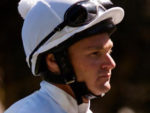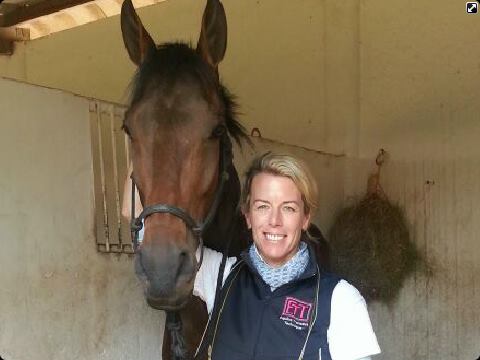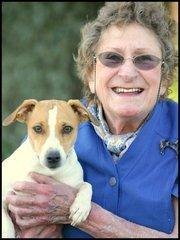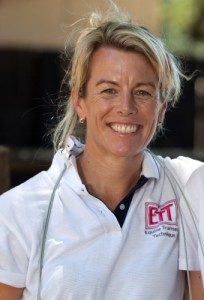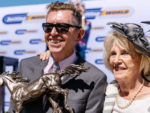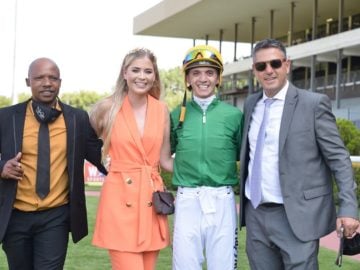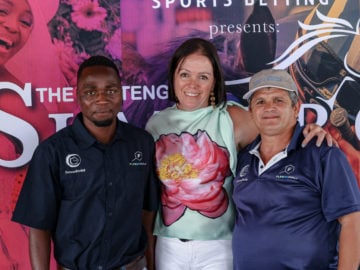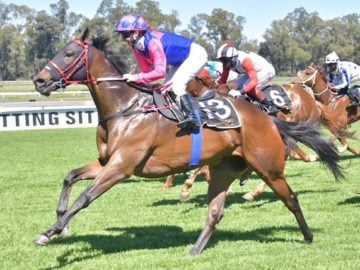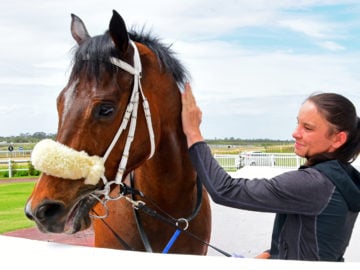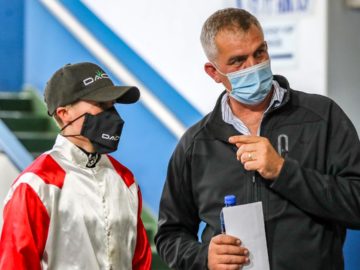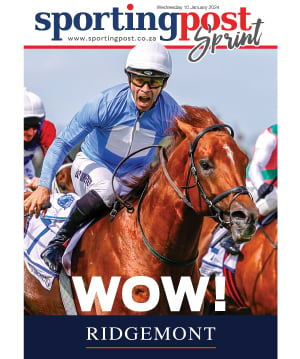Beth Shaw and her Equine Training (BSET) Academy offer one of the most respected equine practice courses in South Africa. They have been achieving ground-breaking results with their Transeva device and recently got just a little extra sparkle with government accreditation as well as academic support from some pretty special people.
Where it all started
What we know today as the Equine Transeva Technique (ETTTM) was originally started by Winks Greene, the daughter of well-known local trainer, breeder and owner, Denis Labistour. Originally based on a ‘Strongbox’ device developed by Charles Strong in the UK, the Transeva works along Faradic lines, applying a low electrical impulse to stimulate damaged muscle tissue and improve blood and lymph circulation.
Winks brought the first Transeva to South Africa in 1953, using it with great success in racehorses. When Charles Strong was no longer able to work, the baton passed to Winks and she continued developing and refining the techniques, modifying the Transeva device to make it more portable and improving the pulse to make it more user-friendly. She eventually opened a training centre to pass the work to a new generation and in 2008, Beth Shaw took over the helm.
In January this year, she celebrated the huge milestone of receiving their CATHSSETA accreditation for the South African Qualifications Authority (SAQA), meaning BSET and its Equine Practices course are now officially recognised.
Beth Shaw
For those who haven’t met her, Beth is a petite blonde with lively blue eyes and a brisk, determined energy to her. “I didn’t know whether I was doing the right thing, but securing this makes it easier for students to get visas, student loans etc – and now when people ask whether the course is recognised, I can say yes,” she says proudly.
Being accredited by Government makes the course more marketable internationally and also allowed Beth to keep a long-standing promise. “Years ago I said to myself that as soon as the accreditation comes through, I’m going to the UK to advertise the BSET Academy and to say thank you to Sara Wyche (author of, amongst others, The Horse’s Muscles In Motion).
“When I first started, Winks always spoke about the iliopsoas, but other than Sara’s book, very little had been written about the psoas group and the iliopsoas in particular at the time. Sara’s books were the first good resource I found dealing with this and not only was it a good tool, it gave me confidence about its importance. Her books are written in a way that’s very easy to understand. The way she rebuilds the horse and the way she draws it – I just connected with it. Then about 2-3 years ago when I had difficult cases, I emailed her and she’s always been there to give me back up and guidance after Winks’ passing. She’s been so supportive and has always encouraged me in my work. So it was just one of those things that you say you’re going to do and then you do it.”
But she also had bigger things in mind.
The Horse Will Tell You
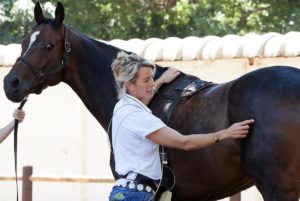
I have been standing in a stable for 15 years and the horses are showing me something (photo: supplied)
“I went over with the goal of advertising the course to overseas students and to discuss and develop scientific research in Transeva Technique. I’m not an academic, but I have been standing in a stable for 15 years and the horses are showing me something. Now I have to figure it out scientifically.” There is a quiet determination in her words and one can hear her mental cogs whirring away in the background.
The ‘something’ Beth refers to is something she has come to recognise as a fairly specific condition which presents roughly 10 days after extreme exercise exertion. As Beth and her team learn about the condition, they are also learning how to treat it, which is being aided by the uptake of their work.
“We’re doing a lot of post race and post gallop treatments and what we’re working on a lot now is maintaining and perfecting the equine athlete. We’re often there a few hours after the horse has done hard training and we’re working with them consistently through the season allowing us to build comprehensive data.”
“One of my sayings is that observation alone turns possibility into reality. It’s fascinating, but the horses are indicating that the Transeva – fantastic as it is – is capable of more than what it’s doing.”
In addition to improving muscle function, Beth has been seeing increasing evidence that the machine is also capable of improving nerve function. “It’s what the horses have been showing me for a long time, but it’s only in the last 2 or 3 years that I’ve been putting things together. I believe, if used correctly, the WG Transeva can help people with neurological diseases.”
Breakthrough
“What’s interesting is that in all my conversations with centres for equine study, there is very little written on equine nerve pain. While we have heaps of practical results and we have case studies, we don’t have scientific data. I have to go back to one study and correlate it with another study – there’s nothing on what I’m learning and trying to put together.”
It’s something Beth intends to remedy.
Tour
The accreditation came through on 19 January and Beth scheduled her trip in late February – probably the coldest week of the year in the Northern Hemisphere! “It was the only time I could do it. After that, life starts getting crazy with the start of Champions Season and all the July horses arriving in KZN.”
It was a packed visit, starting off with meeting Dr Ben and Victoria Brain (Brain Partners Equine Vets in Cheltenham) who specialise in resting and dynamic endoscopic examination of the larynx, Laryngeal Paralysis and Soft Palate Problems. Dr Brain’s father, Jeffrey Brain, pioneered the Hobday operation in the late 1950’s and interestingly, Ben worked at Nutfield Stud some 24 years ago for John Brandtner!
At Hartpury College she met with Andrew Beacham and Dr. Kathryn Nankervis, their Principal Lecturer on Equine Therapy, but perhaps the most important stop on her list was a meeting with Suzanne Cottrail at the University Of Liverpool.
Pivotal visit
“Suzanne is intrigued by my research and willing to read my research and help develop it more formally. We have years of practical results and case studies, but no scientific research with peer reviews and this is what I’m trying to create. Once I have that, I will be able to do much more in terms of publishing the work.
After a few more meetings, it was finally off to Oban in Scotland. “Meeting Sara for the first time on March 6th was a real treat. Scotland was beautiful with fantastic scallops and oysters – and yes soul warming whiskey.”
There was was just time for to catch up with BSET Alumni – ETT Practitioner Abigail Lewis and Dr Arthur Dunkley, before heading home – via Dubai to meet up with BSET Alumni Kelly Cochrane – and an afternoon of racing in the desert.
Beth came beck re-energised and with a fresh appreciation and appetite for the task at hand. “The Transeva has been in development for around 200 years and we’ve now got to the stage where it’s turned into its own modality and we are teaching 10 students a year. It’s my responsibility to make sure the scientific research gets out there and that we can keep building.”
“You’re not going to heal a neurological disease,” she says frankly, “but you can fight it and help a person maintain their lifestyle. It’s a pretty big ask, but you know what – nobody was critical when I put that on the table. It was fantastic. They were little things and it was really just opening up doors, but it was really amazing walking out of these places and having people say ‘you’re onto something there, Beth.’ That’s quite a powerful thing.”
“The other thing I came away with that I’m really proud of is that there are ETT practitioners around the world running successful practices. You can go to England, Dubai, Mauritius and Singapore and find BSET Alumni. It’s slowly growing.”
What’s next?
As Champions Season gets under way, Beth is looking forward to her busiest time of the year. “It’s wonderful being exposed to top athletes and top trainers. You can treat horses in a very organised manner after work and in the build up to races. It’s all about keeping your eyes open, learning what the horse is teaching us and improving everything all the time.”
“When a horse is training, that’s when they’re creating muscle. And if you can work with that athlete after he’s trained, realign everything and get him comfortable, he’s better able to rest, eat and grow muscle. We’re very lucky to work in a situation where we’re always with top athletes and well-bred horses, but no matter what their genetic potential, a lot can happen to a horse between conception and getting it to the track. ETT is there to help it reach its potential.”
“With the results we’ve been seeing in the last two years, I think we’ve been able to prove to trainers that if you maintain balanced muscle, you have happier, healthier joints and better flight patterns. I’m very lucky to work with some great trainers who do see the benefit of post training and post gallop treatments, which allows you to refresh the muscle. After training, there’s going to be waste and inflammation – we can go in and perfect that muscle, the action and clean out the lymph.”
Learning
She will also be furthering her research and plans to return to the UK in September. “We’re doing some research now on behavioural disorders and nerve pain and whatever information we gather, we’ll be doing with the aim of getting it published. We’re quantifying things and putting numbers to things to create scientific research.”
“While I was sitting on that train that was likely to get stuck on the way to Liverpool in what felt like -10 degrees, it was all because I believe in this work. It’s fascinating what the horses have been teaching me and how far we’ve come with it. I’m excited to see where we can go next.”
‹ Previous
